
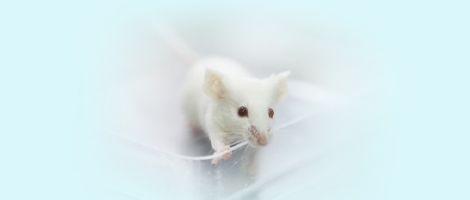

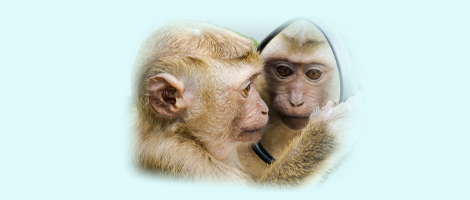
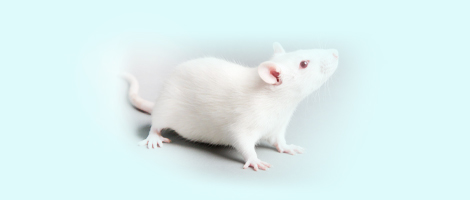
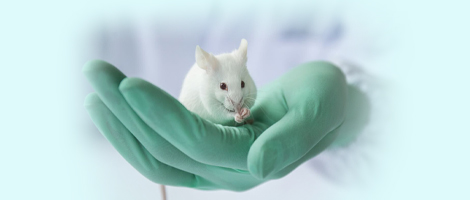
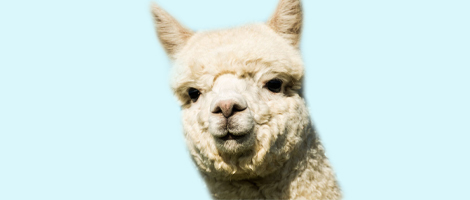







实验动物与比较医学 ›› 2023, Vol. 43 ›› Issue (4): 406-414.DOI: 10.12300/j.issn.1674-5817.2023.026
邓亚胜( ), 林江, 甘池伶, 曾官凤, 黄嘉茵, 邓慧芳, 麻颖贤, 韩丝银(
), 林江, 甘池伶, 曾官凤, 黄嘉茵, 邓慧芳, 麻颖贤, 韩丝银( )(
)( )
)
收稿日期:2023-02-24
修回日期:2023-04-11
出版日期:2023-08-25
发布日期:2023-08-25
通讯作者:
韩丝银(1991—),女,博士,副教授,研究方向:海洋药物研究及产品开发工作。E-mail:1715252639@qq.com。ORCID:0000-0001-8562-7723作者简介:邓亚胜(1993—),男,硕士研究生,研究方向:特色方剂的配伍及成药化研究。E-mail:1440362586@qq.com
基金资助:
Yasheng DENG( ), Jiang LIN, Chiling GAN, Guanfeng ZENG, Jiayin HUANG, Huifang DENG, Yingxian MA, Siyin HAN(
), Jiang LIN, Chiling GAN, Guanfeng ZENG, Jiayin HUANG, Huifang DENG, Yingxian MA, Siyin HAN( )(
)( )
)
Received:2023-02-24
Revised:2023-04-11
Published:2023-08-25
Online:2023-08-25
Contact:
HAN Siyin (ORCID: 0000-0001-8562-7723), E-mail: 1715252639@qq.com摘要:
目的 分析皮肤光老化动物模型的造模要素和受试物情况,为该动物模型的制备和完善提供参考,也为科学评价受试物提供依据。 方法 通过在中国知网、万方、PubMed数据库中检索收集2010—2022年皮肤光老化动物模型制备的相关文献,对文献中记载的模型动物种类、性别、造模方法、造模周期、辐射光源与造模部位距离、累计辐射量、检测指标、受试物(药物或治疗手段)内容进行整理归纳,建立数据库后进行统计分析。 结果 筛选出257篇符合纳入标准的文献,其中模型动物使用最多的是SKH-1无毛小鼠,其次为SD大鼠和KM小鼠;动物的性别选择以单一雌性为主,常采用中波紫外线(ultraviolet B,UVB)作为辐射光源,辐射光源与造模部位的距离多为30 cm,造模周期多控制在40~60 d;长波紫外线(ultraviolet A,UVA)累计照射剂量在100~150 J/cm2的所占比例最大,中波紫外线(ultraviolet B,UVB)累计照射剂量在5~10 J/cm2的所占比例最大。模型建立后采用的检测指标为皮肤组织病理检查、皮肤组织匀浆、纤维染色、免疫印迹检查等。受试物包括中药、中药提取物、中成药、中药复方、化学药、生物制剂以及其他治疗手段,同时皮肤光老化动物模型还应用于中医外治、物理疗法、阳性对照药方面的临床疗效研究。 结论 皮肤光老化动物实验常选用SKH-1雌性无毛小鼠,采用UVB作为辐射光源,造模周期多控制在40~60 d,UVB累计照射剂量在0~10 J/cm2,按照最小红斑量(minimum erythema dose,MED)逐周递增方式进行造模,具有成模率高、重现性好以及与临床疾病高度吻合等优点。
中图分类号:
邓亚胜,林江,甘池伶,等. 皮肤光老化动物模型制备要素和受试物数据的文献分析[J]. 实验动物与比较医学, 2023, 43(4): 406-414. DOI: 10.12300/j.issn.1674-5817.2023.026.
Yasheng DENG,Jiang LIN,Chiling GAN,et al. Literature Analysis of the Preparation Elements of Animal Models of Skin Photoaging and the Data of Subjects[J]. Laboratory Animal and Comparative Medicine, 2023, 43(4): 406-414. DOI: 10.12300/j.issn.1674-5817.2023.026.
动物种类 Animal species | 品种品系 Breed or strain | 频次(所占百分比) Frequency (percentage/%) |
|---|---|---|
| 小鼠Mouse | SKH-1无毛小鼠 | 60 (23.34) |
| KM小鼠 | 52 (20.23) | |
| BALB/c小鼠 | 23 (8.95) | |
| HR-1无毛小鼠 | 22 (8.56) | |
| ICR小鼠 | 20 (7.78) | |
| C57BL/6小鼠 | 3 (1.17) | |
| Swiss小鼠 | 3 (1.17) | |
| HRM-2无毛小鼠 | 2 (0.78) | |
| 未知种类无毛小鼠 | 2 (0.78) | |
| 大鼠Rat | SD大鼠 | 53 (20.62) |
| Wistar大鼠 | 8 (3.11) | |
| F344大鼠 | 2 (0.78) | |
| HWY/Slc无毛大鼠 | 1 (0.39) | |
| 豚鼠Guinea pig | 未知种类 | 4 (1.56) |
| 猪Pig | 广西巴马小型猪 | 2 (0.78) |
表1 皮肤光老化模型的动物选择种类及频次分布
Table 1 Species and frequency distribution of skin photoaging model animals
动物种类 Animal species | 品种品系 Breed or strain | 频次(所占百分比) Frequency (percentage/%) |
|---|---|---|
| 小鼠Mouse | SKH-1无毛小鼠 | 60 (23.34) |
| KM小鼠 | 52 (20.23) | |
| BALB/c小鼠 | 23 (8.95) | |
| HR-1无毛小鼠 | 22 (8.56) | |
| ICR小鼠 | 20 (7.78) | |
| C57BL/6小鼠 | 3 (1.17) | |
| Swiss小鼠 | 3 (1.17) | |
| HRM-2无毛小鼠 | 2 (0.78) | |
| 未知种类无毛小鼠 | 2 (0.78) | |
| 大鼠Rat | SD大鼠 | 53 (20.62) |
| Wistar大鼠 | 8 (3.11) | |
| F344大鼠 | 2 (0.78) | |
| HWY/Slc无毛大鼠 | 1 (0.39) | |
| 豚鼠Guinea pig | 未知种类 | 4 (1.56) |
| 猪Pig | 广西巴马小型猪 | 2 (0.78) |
辐射光源与造模部位距离/cm Distance between the radiation source and the moulding site/cm | 频次(所占百分比/%) Frequency (percentage/%) | 累计照射剂量/(J·cm2) Cumulative exposure dose/ (J·cm2) | 频次(所占百分比/%) Frequency (percentage/%) |
|---|---|---|---|
| 2 | 1 (0.92) | UVA≤50 | 6 (9.09) |
| 6.5 | 1 (0.92) | 50<UVA≤100 | 13 (19.70) |
| 10 | 4 (3.67) | 100<UVA≤150 | 20 (30.30) |
| 15 | 6 (5.50) | 150<UVA≤200 | 13 (19.70) |
| 18 | 2 (1.84) | 200<UVA≤250 | 0 (0.00) |
| 20 | 11 (10.09) | 250<UVA≤300 | 5 (7.58) |
| 22 | 1 (0.92) | UVA>300 | 9 (13.63) |
| 23 | 2 (1.83) | UVB≤5 | 12 (15.58) |
| 25 | 3 (2.75) | 5<UVB≤10 | 24 (31.17) |
| 30 | 36 (33.03) | 10<UVB≤15 | 8 (10.39) |
| 35 | 10 (9.17) | 15<UVB≤20 | 2 (2.60) |
| 40 | 21 (19.27) | 20<UVB≤25 | 10 (12.99) |
| 42 | 2 (1.84) | 25<UVB≤30 | 1 (1.30) |
| 50 | 6 (5.50) | UVB>30 | 20 (25.97) |
| 100 | 3 (2.75) |
表2 皮肤光老化动物模型的辐射光源与造模部位距离以及紫外线累计照射剂量
Table 4 Distance between the radiation source and the modelling site as well as cumulative UV exposure doses in the animal model of skin photoaging
辐射光源与造模部位距离/cm Distance between the radiation source and the moulding site/cm | 频次(所占百分比/%) Frequency (percentage/%) | 累计照射剂量/(J·cm2) Cumulative exposure dose/ (J·cm2) | 频次(所占百分比/%) Frequency (percentage/%) |
|---|---|---|---|
| 2 | 1 (0.92) | UVA≤50 | 6 (9.09) |
| 6.5 | 1 (0.92) | 50<UVA≤100 | 13 (19.70) |
| 10 | 4 (3.67) | 100<UVA≤150 | 20 (30.30) |
| 15 | 6 (5.50) | 150<UVA≤200 | 13 (19.70) |
| 18 | 2 (1.84) | 200<UVA≤250 | 0 (0.00) |
| 20 | 11 (10.09) | 250<UVA≤300 | 5 (7.58) |
| 22 | 1 (0.92) | UVA>300 | 9 (13.63) |
| 23 | 2 (1.83) | UVB≤5 | 12 (15.58) |
| 25 | 3 (2.75) | 5<UVB≤10 | 24 (31.17) |
| 30 | 36 (33.03) | 10<UVB≤15 | 8 (10.39) |
| 35 | 10 (9.17) | 15<UVB≤20 | 2 (2.60) |
| 40 | 21 (19.27) | 20<UVB≤25 | 10 (12.99) |
| 42 | 2 (1.84) | 25<UVB≤30 | 1 (1.30) |
| 50 | 6 (5.50) | UVB>30 | 20 (25.97) |
| 100 | 3 (2.75) |
分类 Classification | 检测指标 Testing indicators | 频次(所占百分比/%) Frequency(percentage/%) |
|---|---|---|
皮肤外观特征 Skin appearance features | 皮肤外观观察 | 80 (9.06) |
| 皮肤(表皮、真皮)厚度 | 46 (5.21) | |
| 皱纹测定 | 31 (3.51) | |
| 皮肤弹性 | 9 (1.02) | |
皮肤含水量变化 Skin moisture content change | 经皮水分损失 | 41 (4.64) |
| 皮肤(角质层)水合作用测定 | 14 (1.58) | |
| 皮肤含水量测定 | 5 (0.57) | |
皮肤病理检查 Dermatologic examination | 皮肤组织病理检查 | 173 (19.59) |
| 纤维染色 | 99 (11.21) | |
| 免疫组化 | 64 (7.26) | |
| 免疫荧光 | 9 (1.02) | |
皮肤组织匀浆检测 Skin tissue homogenisation | 丙二醛、羟脯氨酸、过氧化氢酶活性、透明质酸、超氧化物歧化酶活性、谷胱甘肽过氧化酶活性、皮肤组织总抗氧化能力 | 108 (12.23) |
免疫检测 Immunity testing | 免疫印迹 | 81 (9.17) |
| 酶联免疫吸附试验 | 26 (2.94) | |
PCR分析 PCR analysis | 反转录PCR | 30 (3.40) |
| 实时荧光PCR | 19 (2.15) | |
血液检查 Blood examination | 血清 | 19 (2.15) |
| 全血或血浆 | 6 (0.68) | |
其他 Others | β-半乳糖苷酶染色 | 8 (0.91) |
| 体重变化 | 9 (1.02) | |
| 活性氧定量分析/髓过氧化物酶活性测定 | 6 (0.68) |
表3 皮肤光老化动物模型的检测指标及分类
Table 3 Testing indicators and classification of skin photoaging animal models
分类 Classification | 检测指标 Testing indicators | 频次(所占百分比/%) Frequency(percentage/%) |
|---|---|---|
皮肤外观特征 Skin appearance features | 皮肤外观观察 | 80 (9.06) |
| 皮肤(表皮、真皮)厚度 | 46 (5.21) | |
| 皱纹测定 | 31 (3.51) | |
| 皮肤弹性 | 9 (1.02) | |
皮肤含水量变化 Skin moisture content change | 经皮水分损失 | 41 (4.64) |
| 皮肤(角质层)水合作用测定 | 14 (1.58) | |
| 皮肤含水量测定 | 5 (0.57) | |
皮肤病理检查 Dermatologic examination | 皮肤组织病理检查 | 173 (19.59) |
| 纤维染色 | 99 (11.21) | |
| 免疫组化 | 64 (7.26) | |
| 免疫荧光 | 9 (1.02) | |
皮肤组织匀浆检测 Skin tissue homogenisation | 丙二醛、羟脯氨酸、过氧化氢酶活性、透明质酸、超氧化物歧化酶活性、谷胱甘肽过氧化酶活性、皮肤组织总抗氧化能力 | 108 (12.23) |
免疫检测 Immunity testing | 免疫印迹 | 81 (9.17) |
| 酶联免疫吸附试验 | 26 (2.94) | |
PCR分析 PCR analysis | 反转录PCR | 30 (3.40) |
| 实时荧光PCR | 19 (2.15) | |
血液检查 Blood examination | 血清 | 19 (2.15) |
| 全血或血浆 | 6 (0.68) | |
其他 Others | β-半乳糖苷酶染色 | 8 (0.91) |
| 体重变化 | 9 (1.02) | |
| 活性氧定量分析/髓过氧化物酶活性测定 | 6 (0.68) |
| 1 | CHEN X, YANG C S, JIANG G. Research progress on skin photoaging and oxidative stress[J]. Postepy Dermatol Alergol, 2021, 38(6):931-936. DOI: 10.5114/ada.2021.112275 . |
| 2 | BOCHEVA G, SLOMINSKI R M, JANJETOVIC Z, et al. Protective role of melatonin and its metabolites in skin aging[J]. Int J Mol Sci, 2022, 23(3):1238. DOI: 10.3390/ijms23031238 . |
| 3 | PARRADO C, MERCADO-SAENZ S, PEREZ-DAVO A, et al. Environmental stressors on skin aging. mechanistic insights[J]. Front Pharmacol, 2019, 10:759. DOI: 10.3389/fphar.2019.00759 . |
| 4 | SALMINEN A, KAARNIRANTA K, KAUPPINEN A. Photoaging: UV radiation-induced inflammation and immunosuppression accelerate the aging process in the skin[J]. Inflamm Res, 2022, 71(7):817-831. DOI: 10.1007/s00011-022-01598-8 . |
| 5 | SWIADER A, CAMARÉ C, GUERBY P, et al. 4-hydroxynonenal contributes to fibroblast senescence in skin photoaging evoked by UV-A radiation[J]. Antioxidants (Basel), 2021, 10(3):365. DOI: 10.3390/antiox10030365 . |
| 6 | KANG M K, KIM D Y, OH H, et al. Dietary collagen hydrolysates ameliorate furrowed and parched skin caused by photoaging in hairless mice[J]. Int J Mol Sci, 2021, 22(11):6137. DOI: 10.3390/ijms22116137 . |
| 7 | JIN X X, ZHANG X D, LI Y B, et al. Long-acting microneedle patch loaded with adipose collagen fragment for preventing the skin photoaging in mice[J]. Biomater Adv, 2022, 135:212744. DOI: 10.1016/j.bioadv.2022.212744 . |
| 8 | CHEN Q Y, ZHANG H Y, YANG Y M, et al. Metformin attenuates UVA-induced skin photoaging by suppressing mitophagy and the PI3K/AKT/mTOR pathway[J]. Int J Mol Sci, 2022, 23(13):6960. DOI: 10.3390/ijms23136960 . |
| 9 | GUAN L L, LIM H W, MOHAMMAD T F. Sunscreens and Photoaging: A Review of Current Literature[J]. Am J Clin Dermatol, 2021, 22(6): 819-828. DOI: 10.1007/s40257-021-00632-5 . |
| 10 | POON F, KANG S, CHIEN A L. Mechanisms and treatments of photoaging[J]. Photodermatol Photoimmunol Photomed, 2015, 31(2): 65-74. DOI: 10.1111/phpp.12145 . |
| 11 | LIANG Y, SIMAITI A, XU M, et al. Antagonistic Skin Toxicity of Co-Exposure to Physical Sunscreen Ingredients Zinc Oxide and Titanium Dioxide Nanoparticles[J]. Nanomaterials (Basel), 2022, 12(16). DOI: 10.3390/nano12162769 . |
| 12 | 丁苗苗, 魏玲, 陈春宇, 等. 中药有效成分抗皮肤光老化作用及其机制研究进展[J]. 中国中药杂志, 2022, 47(14): 3709-3717. DOI: 10.19540/j.cnki.cjcmm.20220415.601 . |
| DING M M, WEI L, CHEN C Y, et al. Anti-photoaging effects and mechanisms of active ingredients of Chinese medicine: a review[J]. China J Chin Mater Med, 2022, 47(14): 3709-3717. DOI: 10.19540/j.cnki.cjcmm.20220415.601 . | |
| 13 | 朱姗, 赵志月, 王子静, 等. 皮肤老化分子机制及中药防治皮肤老化研究进展[J]. 天津中医药大学学报, 2021, 40(4): 431-439. DOI: 10.11656/j.issn.1673-9043.2021.04.06 . |
| ZHU S, ZHAO Z Y, WANG Z J, et al. Research progress of molecular mechanism of skin aging and prevention of skin aging with traditional Chinese medicine[J]. J Tianjin Univ Tradit Chin Med, 2021, 40(4): 431-439. DOI: 10.11656/j.issn.1673-9043.2021.04.06 . | |
| 14 | 王璐, 李中平, 曹艳亚, 等. 沙参麦冬汤对皮肤光老化模型小鼠的保护作用[J]. 中国老年学杂志, 2015, 35(6): 1628-1631. DOI: 10.3969/j.issn.1005-9202.2015.06.091 . |
| WANG L, LI Z P, CAO Y Y, et al. Protective effect of Shashen Maidong Decoction on skin photoaging model mice[J]. Chin J Gerontol, 2015, 35(6): 1628-1631. DOI: 10.3969/j.issn.1005-9202.2015.06.091 . | |
| 15 | 张宇, 曹南开, 张小卿, 等. 桃红四物汤对光老化小鼠皮肤组织中MMP-1、MMP-3 mRNA及血清中TNF-α、IL-1含量表达的影响[J]. 中华中医药学刊, 2015, 33(4): 919-921, 后插8. DOI: 10.13193/j.issn.1673-7717.2015.04.048 . |
| ZHANG Y, CAO N K, ZHANG X Q, et al. Effect of Taohongsiwu Decoction on expressions of MMP-1, MMP-3 mRNA in skin tissue and TNF-a, IL-1 in blood serum of photoaged mice[J]. Chin Arch Tradit Chin Med, 2015, 33(4): 919-921, 10008. DOI: 10.13193/j.issn.1673-7717.2015.04.048 . | |
| 16 | SHAMLOUL N, HASHIM P W, NIA J J, et al. The role of vitamins and supplements on skin appearance[J]. Cutis, 2019, 104(4): 220-224. |
| 17 | 邓映, 杜宇, 刘萍, 等. 氧化应激在皮肤光老化中的作用[J]. 中国医疗美容, 2020, 10(8): 117-122. DOI: 10.19593/j.issn.2095-0721.2020.08.030 . |
| DENG Y, DU Y, LIU P, et al. The role of oxidative stress in skin photoaging[J]. Chin Med Cosmetol, 2020, 10(8): 117-122. DOI: 10.19593/j.issn.2095-0721.2020.08.030 . | |
| 18 | CHENOUARD V, REMY S, TESSON L, et al. Advances in genome editing and application to the generation of genetically modified rat models[J]. Front Genet, 2021, 12:615491. DOI: 10.3389/fgene.2021.615491 . |
| 19 | MEEK S, MASHIMO T, BURDON T. From engineering to editing the rat genome[J]. Mamm Genome, 2017, 28(7):302-314. DOI: 10.1007/s00335-017-9705-8 . |
| 20 | 王诗萌, 李甜, 杨田野, 等. 紫外线照射实验动物的皮肤光老化模型研究进展[J]. 中国美容医学, 2018, 27(7):146-150. DOI: 10.14163/j.cnki.11-5547/r.2016.30.160 . |
| WANG S M, LI T, YANG T Y, et al. Progressof skin photoaging models of ultraviolet irradiated experimental animals[J]. Chin J Aesthetic Med, 2018, 27(7):146-150. DOI: 10.14163/j.cnki.11-5547/r.2016.30.160 . | |
| 21 | RUIZ-LARREA M B, MARTÍN C, MARTÍNEZ R, et al. Antioxidant activities of estrogens against aqueous and lipophilic radicals; differences between phenol and catechol estrogens[J]. Chem Phys Lipids, 2000, 105(2):179-188. DOI: 10.1016/S0009-3084(00)00120-1 . |
| 22 | LEPHART E D. Skin aging and oxidative stress: Equol's anti-aging effects via biochemical and molecular mechanisms[J]. Ageing Res Rev, 2016, 31:36-54. DOI: 10.1016/j.arr.2016.08.001 . |
| 23 | LEPHART E D, NAFTOLIN F. Menopause and the skin: old Favorites and new innovations in cosmeceuticals for estrogen-deficient skin[J]. Dermatol Ther (Heidelb), 2021, 11(1):53-69. DOI: 10.1007/s13555-020-00468-7 . |
| 24 | PARK H M, CHO M H, CHO Y, et al. Royal jelly increases collagen production in rat skin after ovariectomy[J]. J Med Food, 2012, 15(6):568-575. DOI: 10.1089/jmf.2011.1888 . |
| 25 | LEPHART E D. A review of the role of estrogen in dermal aging and facial attractiveness in women[J]. J Cosmet Dermatol, 2018, 17(3):282-288. DOI: 10.1111/jocd.12508 . |
| 26 | LEPHART E D, NAFTOLIN F. Factors influencing skin aging and the important role of estrogens and selective estrogen receptor modulators (SERMs)[J]. Clin Cosmet Investig Dermatol, 2022, 15:1695-1709. DOI: 10.2147/CCID.S333663 . |
| 27 | LI W G, LUO X Y. An invariant-based damage model for human and animal skins[J]. Ann Biomed Eng, 2016, 44(10):3109-3122. DOI: 10.1007/s10439-016-1603-9 . |
| 28 | 陶丛敏, 马文宇. 光老化的动物模型研究进展[J]. 临床皮肤科杂志, 2018, 47(6):386-388. DOI: 10.16761/j.cnki.1000-4963.2018.06.017 . |
| TAO C M, MA W Y. Research progress of animal model of skin photoaging[J]. J Clin Dermatol, 2018, 47(6):386-388. DOI: 10.16761/j.cnki.1000-4963.2018.06.017 . | |
| 29 | GUO K K, LIU R, JING R R, et al. Cryptotanshinone protects skin cells from ultraviolet radiation-induced photoaging via its antioxidant effect and by reducing mitochondrial dysfunction and inhibiting apoptosis[J]. Front Pharmacol, 2022, 13:1036013. DOI: 10.3389/fphar.2022.1036013 . |
| 30 | 孔悦, 郭砚. 皮肤光老化小鼠模型的构建及效果评估[J]. 实验动物与比较医学, 2021, 41(2):116-121. DOI: 10.12300/j.issn.1674-5817.2020.191 |
| KONG Y, GUO Y. Construction and evaluation of skin photoaging mouse model[J]. Lab Animal Comp Med, 2021, 41(2):116-121. DOI: 10.12300/j.issn.1674-5817.2020.191 . | |
| 31 | GENDRISCH F, ESSER P R, SCHEMPP C M, et al. Luteolin as a modulator of skin aging and inflammation[J]. Biofactors, 2021, 47(2):170-180. DOI: 10.1002/biof.1699 . |
| 32 | ZAMARRÓN A, LORRIO S, GONZÁLEZ S, et al. Fernblock prevents dermal cell damage induced by visible and infrared A radiation[J]. Int J Mol Sci, 2018, 19(8):2250. DOI: 10.3390/ijms19082250 . |
| 33 | CHOI K S, KUNDU J K, CHUN K S, et al. Rutin inhibits UVB radiation-induced expression of COX-2 and iNOS in hairless mouse skin: p38 MAP kinase and JNK as potential targets[J]. Arch Biochem Biophys, 2014, 559:38-45. DOI: 10.1016/j.abb.2014.05.016 . |
| 34 | KUNDU J K, CHANG E J, FUJII H, et al. Oligonol inhibits UVB-induced COX-2 expression in HR-1 hairless mouse skin: AP-1 and C/EBP as potential upstream targets[J]. Photochem Photobiol, 2008, 84(2):399-406. DOI: 10.1111/j.1751-1097.2007.00277.x . |
| 35 | PAL H C, ATHAR M, ELMETS C A, et al. Fisetin inhibits UVB-induced cutaneous inflammation and activation of PI3K/AKT/NFκB signaling pathways in SKH-1 hairless mice[J]. Photochem Photobiol, 2015, 91(1):225-234. DOI: 10.1111/php.12337 . |
| 36 | MOON N R, KANG S, PARK S. Consumption of ellagic acid and dihydromyricetin synergistically protects against UV-B induced photoaging, possibly by activating both TGF-β1 and Wnt signaling pathways[J]. J Photochem Photobiol B Biol, 2018, 178:92-100. DOI: 10.1016/j.jphotobiol.2017.11.004 . |
| 37 | TSUKAHARA K, MORIWAKI S, FUJIMURA T, et al. Inhibitory effect of an extract of Sanguisorba officinalis L. on ultraviolet-B-induced photodamage of rat skin[J]. Biol Pharm Bull, 2001, 24(9):998-1003. DOI: 10.1248/bpb.24.998 . |
| 38 | TANG Z T, TONG X L, HUANG J H, et al. Research progress of keratinocyte-programmed cell death in UV-induced Skin photodamage[J]. Photodermatol Photoimmunol Photomed, 2021, 37(5):442-448. DOI: 10.1111/phpp.12679 . |
| 39 | Oh J H, KARADENIZ F, LEE J I, et al. Antiphotoaging Effect of (2'S)-Columbianetin from Corydalis heterocarpa in UVA-Irradiated Human Dermal Fibroblasts[J]. App Sci, 2020, 10(7): 2568. DOI:10.3390/app10072568 . |
| 40 | VATS K, KRUGLOV O, MIZES A, et al. Keratinocyte death by ferroptosis initiates skin inflammation after UVB exposure[J]. Redox Biol, 2021, 47:102143. DOI: 10.1016/j.redox.2021.102143 . |
| 41 | RANA S, FATIMA N, YAQOOB S, et al. Probing photoprotection properties of lipophilic chain conjugated thiourea-aryl group molecules to attenuate ultraviolet-A induced cellular and DNA damages[J]. Sci Rep, 2022, 12(1):20907. DOI: 10.1038/s41598-022-25515-5 . |
| 42 | ZAMARRÓN A, MOREL E, LUCENA S R, et al. Extract of Deschampsia antarctica (EDA) prevents dermal cell damage induced by UV radiation and 2, 3, 7, 8-tetrachlorodibenzo-p-dioxin[J]. Int J Mol Sci, 2019, 20(6):1356. DOI: 10.3390/ijms20061356 . |
| 43 | ATALAY S, GĘGOTEK A, WROŃSKI A, et al. Therapeutic application of cannabidiol on UVA and UVB irradiated rat skin. A proteomic study[J]. J Pharm Biomed Anal, 2021, 192:113656. DOI: 10.1016/j.jpba.2020.113656 . |
| 44 | KHAN A Q, TRAVERS J B, KEMP M G. Roles of UVA radiation and DNA damage responses in melanoma pathogenesis[J]. Environ Mol Mutagen, 2018, 59(5):438-460. DOI: 10.1002/em.22176 . |
| 45 | KHAN A, BAI H L, KHAN A, et al. Neferine prevents ultraviolet radiation-induced skin photoaging[J]. Exp Ther Med, 2020, 19(5):3189-3196. DOI: 10.3892/etm.2020.8587 . |
| [1] | 刘亚益, 贾云凤, 左一鸣, 张军平, 吕仕超. 心气阴两虚证动物模型的构建方法与评价进展[J]. 实验动物与比较医学, 2025, 45(4): 411-421. |
| [2] | 赵鑫, 王晨曦, 石文清, 娄月芬. 斑马鱼在炎症性肠病机制及药物研究中的应用进展[J]. 实验动物与比较医学, 2025, 45(4): 422-431. |
| [3] | 李会萍, 高洪彬, 温金银, 杨锦淳. 疾病动物模型数字化图谱数据库平台的构建与初步应用[J]. 实验动物与比较医学, 2025, 45(3): 300-308. |
| [4] | 潘颐聪, 蒋汶洪, 胡明, 覃晓. 慢性肾脏病大鼠主动脉钙化模型的术式优化及效果评价[J]. 实验动物与比较医学, 2025, 45(3): 279-289. |
| [5] | 王碧莹, 鲁家铄, 昝桂影, 陈若松, 柴景蕊, 刘景根, 王瑜珺. 啮齿类动物药物成瘾模型的构建方法和应用进展[J]. 实验动物与比较医学, 2025, 45(2): 158-166. |
| [6] | 陈钰涵, 陈瑾玲, 李欣, 区燕华, 王斯, 陈镜伊, 王兴易, 袁嘉丽, 段媛媛, 羊忠山, 牛海涛. 基于中西医临床病证特点的重症肌无力动物模型分析[J]. 实验动物与比较医学, 2025, 45(2): 176-186. |
| [7] | 连辉, 姜艳玲, 刘佳, 张玉立, 谢伟, 薛晓鸥, 李健. 异常子宫出血大鼠模型的构建与评价[J]. 实验动物与比较医学, 2025, 45(2): 130-146. |
| [8] | 罗世雄, 张赛, 陈慧. 常见哮喘动物模型的建立方法与评价研究进展[J]. 实验动物与比较医学, 2025, 45(2): 167-175. |
| [9] | 费彬, 郭文科, 郭建平. 疝疾病动物模型研究及新型疝修补材料应用进展[J]. 实验动物与比较医学, 2025, 45(1): 55-66. |
| [10] | 杨家豪, 丁纯蕾, 钱风华, 孙旗, 姜旭升, 陈雯, 沈梦雯. 脓毒症相关脏器损伤动物模型研究进展[J]. 实验动物与比较医学, 2024, 44(6): 636-644. |
| [11] | 孙效容, 苏丹, 贵文娟, 陈玥. 手术诱导大鼠中重度膝骨关节炎模型的建立与评价[J]. 实验动物与比较医学, 2024, 44(6): 597-604. |
| [12] | 田芳, 潘滨, 史佳怡, 徐燕意, 李卫华. 大气细颗粒物PM2.5暴露动物模型建立方法及在生殖毒性研究中的应用进展[J]. 实验动物与比较医学, 2024, 44(6): 626-635. |
| [13] | 赵小娜, 王鹏, 叶茂青, 曲新凯. 应用Triacsin C构建新型高血糖肥胖小鼠心功能减退模型[J]. 实验动物与比较医学, 2024, 44(6): 605-612. |
| [14] | 涂颖欣, 纪依澜, 王菲, 杨东明, 王冬冬, 孙芷馨, 戴悦欣, 王言吉, 阚广捍, 吴斌, 赵德明, 杨利峰. 小型猪后肢去负荷模拟失重模型的建立与组织损伤研究[J]. 实验动物与比较医学, 2024, 44(5): 475-486. |
| [15] | 黄冬妍, 吴建辉. 生殖毒理学研究动物模型的建立方法及应用评价[J]. 实验动物与比较医学, 2024, 44(5): 550-559. |
| 阅读次数 | ||||||
|
全文 |
|
|||||
|
摘要 |
|
|||||